Chapter 1
Discovering International Search Engines
In This Chapter
- Targeting international audiences
- Identifying opportunities
- Quantifying how many people search
Throughout this book, we talk mainly about what to do to optimize for search engines in the United States, but what about the international market? What about Europe, Latin America, and Asia? This minibook covers what you need to know about working on an international level.
In this chapter, you discover all the basics you need to know to start thinking globally. Cultures and languages vary across the globe, and if you don't properly adjust your market strategy for your international audiences, you risk failure.
You also need to be aware of the different opportunities in international search and how many people out there are using search engines. Not to worry: We have an overview all ready for you in this chapter.
Targeting International Users
Say that you decide to take your business to the international markets. You know that a market exists for classic car customization, and it will generate a whole lot more revenue for you and your company.
Along with the technicalities of international copyright laws, you have to think about certain challenges when you're gearing up to start working in the international markets. First of all, be aware of the different browsers that other countries use. Not all of them use Chrome or Mozilla Firefox, so when designing or tailoring your international website, you need to be aware of the constraints of whatever particular browser is popular in your target country or region. This is why good coding is so important. Remember to always test your web pages in a validator, such as the one at the World Wide Web Consortium’s website, www.w3.org. (You can find more on validating your code in Book IV, Chapter 4.)
Second, the way people access the Internet varies across the globe. Mobile devices (smartphones) far exceed the number of desktop or laptop computers in developing countries. For example, in the world’s most populous nation, China, 85.8 percent of the 649 million Internet users access the web with mobile devices, according to a report by the China Internet Network Information Center as of December 2014. To put those statistics in perspective, the number of Chinese Internet users already outnumbers the total U.S. population by two to one. Yet 649 million represents only 47.9 percent of China’s population — so the Chinese market still has a lot of room to grow. Marketers who want to target China must focus on mobile apps and mobile-friendly websites. A mobile-focused strategy is essential for many other countries, as well.
In countries such as Indonesia, India, and others, Internet access is not a given. There are ongoing efforts by Google, Facebook, and other tech giants to expand the reach of the web in places where connections either don’t exist or are very slow (2G speed, for example, compared to the 4G or 5G networks in the U.S.). If you hope to reach these markets with your online business, your site or application software needs to have streamlined code and small file sizes that can travel well through slow connections. In 2015, Google began using transcoding to simplify web pages when sending results to slow connections. Google has rolled this out in Indonesia, India, and Brazil so far. Transcoding drastically reduces the elements on a web page, removing large images and so forth, so it can load faster. Therefore, if you plan to do online business in these countries, we recommend that you trim your web pages down so that Google’s transcoding hatchet doesn’t have to butcher them too much.
Another thing you need to be aware of is any difference in currency. It affects shipping rates and the prices of the goods you’re trying to sell. For example, at the time of this writing, 1 Euro is the equivalent of 1.07 United States dollars (USD), whereas 1 Japanese yen is the equivalent of .0083 USD. But the exchange rates fluctuate continually, so you need to revise accordingly. A good currency converter is available at XE (www.xe.com/ucc).
Be especially aware of cultural dimensions within that language. Spanish is spoken in many different countries, but it has variations, and what can be a completely innocent word in one country can be a very nasty slang term in another. For example, in the U.S., when you want to determine what’s causing a problem, you say you're trying to get to the “root” of the problem. In Australia, “root” is slang for something very different, and using it in a business meeting will probably get you accused of sexual harassment. Understanding the impact of culture on the language is equally important. In Japanese culture, 4 is an unlucky number (the way 13 is in America), so if your company has “four” in its title or you use it in advertisements, you might want to make a couple of tweaks if you’re going to expand into the Japanese business market.
Some other issues to think about with language include
- Local terms: Especially important if you hope to do local business within that country. Your classic-car customization site for southern Germany could use a listing of dealerships in Bavaria, for instance.
- Spelling and grammar differences: The Spanish spoken in Spain and the Spanish spoken in Central or South America all have some key differences when it comes to spelling and grammar. For one thing, in Spain, Spanish makes use of verb conjugations for the plural second person, vosotros, whereas Spanish spoken in Mexico rarely uses it. French natives say that the dialect spoken in Quebec sounds “wrong” to them.
- Popular culture references: Avoid dating yourself. Keep up on the pop culture trends in a country if you have a business that would be related (such as one that sells clothing). For example, a Bulgarian site would appear dated if it talked about a popular sitcom that hasn’t been on the air in the United States in many years.
- Translation issues: You risk a big hit to your credibility if you’re not careful translating your website content from its original language to a new one. For example, in Wales, a website that had been improperly translated for a school listed its staff as a “stave made out of wood” in Welsh. We suggest adding someone who’s fluent in both English and the language to which you’re translating the site (and preferably someone actually from that country) to your content building and marketing process.
- Vocal culture issues: You may run into issues with languages that have different sounds than English. For example, Japanese has no “t” sound. The closest approximation is “tsu,” so a word such as “fruit” would sound like “fruits” when pronounced in Japanese.
- Visual design: Figure out a country’s particular design aesthetic. Study the visual culture of the target country. In both Japan and Korea, to look professional, your website needs a lot of bright colors and a busy page full of words, images, and links. Google's ultra-clean home page doesn't play well to that audience, but Yahoo's busy portal does. In England, however, a super busy and bright page is considered completely unprofessional. Similarly, color is an important consideration. In China, white is the color of death, much as black is here in the United States — probably not the best choice for your wedding site. Use red on your Chinese site instead because it represents joy in Chinese culture.
In order to truly succeed in a different language, we recommend you get experts in each country on your team. Do you have a German classic-car customization website? Hire someone from Germany who’s an expert in classic cars. She can tell you about the different slang terms Germans use for cars, what kinds of cars are popular, and any of the cultural references you’d miss if you relied on just yourself and a German dictionary.
When translating the website copy you already have, consider language issues and don’t try to translate your pages exactly from one language to another. To get the best final result for your foreign-language website, follow these steps:
- Break the original English down into main bullet points.
- Have a professional translate this text into the second language.
Use that document to create your actual website text for your target language.
Hire a marketer who’s native to the language and region so that you know he’s getting the tone and slang right. Web marketer Ian McAerin refers to this process as the Symantec Expression Equivalency Document (SEED) process.
If all else fails, use the local rule of thumb. Use local terms, local keywords, and local structure in order to truly succeed in your foreign market. People have started bandying about words such as glocal, which is defined as localizing the global market.
Domains and geolocating
Internationalization revolves around domain (where the site actually exists on the web), language, culture, and geolocation issues. Geolocation is the identification of a web page as belonging to or being relevant for a particular country. You also have to be aware of the country-code top-level domain, which is the last part of an Internet domain name — the letters that follow the final dot of any domain name. A country-code top-level domain (ccTLD) is specific to a particular country, such as .ca, .cn, .uk, and .mx. Be aware that ccTLDs are abbreviations in that country’s language, so the ccTLD for Germany is actually .de, for Deutschland.
Creation and delegation of ccTLDs is performed by the Internet Assigned Numbers Authority, or IANA (www.iana.org). You can find a comprehensive list of ccTLDs on IANA’s website at www.iana.org/domains/root/db.
The rules for obtaining a ccTLD are different for each country because each country can administer its own registered ccTLD as it chooses. You always need to do a little bit of research. For example, in order to obtain a .de (Deutschland, or Germany) ccTLD, you need to not only have your site hosted on a German server, but you have to be doing business in the country physically, as well. In Norway, a company can own only 20 domains. For more information on how to obtain a ccTLD, go to www.iana.org/domains/root/cctld.
Some countries have licensed their ccTLDs for worldwide commercial use. Tuvalu and the Federated States of Micronesia, small island countries in the South Pacific, have partnered with VeriSign and FSM Telecommunications, respectively, to license domain names that use the .tv and .fm ccTLDs to interested parties. For more information on country-code TLDs, check out Book VII, Chapter 2.
Search engines don’t like to display duplicate content. If you have multiple domains that show the same page content, the search engines will display that page from only one domain. A search engine like Google may use a number of factors to decide which version of a page to display, including link equity (however many links lead to your site and how much authority they pass) on the page, opting for the page that has more links. Other signals that Google may take into account include the language on the page, the site’s IP address (the location of the page on the web, called the “Internet Protocol” address) as well as the country targeting settings that a site owner indicates in Google Search Console. We tell you more about setting country and language targeting in Google Search Console in the “Single sites” section, later in this chapter.
Site architecture tips
To make your site accessible in the international market, you can follow some very simple architecture guidelines:
- Have your site coded in UTF-8 (Unicode). This is a type of code that allows your site to be translated into languages from around the globe. It is backwardly compatible with ASCII and it encodes up to four-byte characters.
- Don't translate your Meta tags and page titles (HTML coding for your site that defines the characteristics of your page) from English to the language you’re working in. Work in the language itself and make all your tags individually. Plan to adjust for plurals, prepositions, special characters, and so on. Like your web page content, these are too important to just leave for a straight translation.
- Adopt a global press-release strategy. Many online press release portals exist for different languages. Sending out articles announcing news on your company or your products generates links and helps build your global presence.
- Manage your 301s. 301 Redirects automatically send users from a URL that no longer exists to one that does. This is the only type of redirect that is considered to be search engine friendly. A typical global site has hundreds of links going to Page Not Found errors. Domains around the globe are often incorrectly set up, and meta-refreshes (having the page automatically reload) are often present, which are not SEO-recommended methods for handling page redirects. (For more on 301 Redirects, see Book VII, Chapters 3 and 4.)
- Make sure that your URLs contain keywords (words that people search for by using search engines) for which you want to rank in that country. Just like optimization in the United States, keywords in the URL help users identify your site as relevant and can promote recognition.
- Link to other regional sites and seek to obtain inbound links from relevant regional sites as well. Enhance your credibility with your international users.
- Use experts for keyword research. What do you do if there's no direct translation for a word? Employ someone fluent in that language to help you with the translation issues.
- Use ccTLDs. A ccTLD is the domain that relates to a particular country. Using a ccTLD more likely inspires users to trust your site.
- Have a lot of content on your website that reads well to your target audience. Use good, clean copy and make sure you're using the right character sets.
Identifying Opportunities for Your International Site
When you expand into the international market, you have three options when it comes to your site architecture: one site, multiple sites, or a combination of the two. With one site, you can take advantage of subdomains (smaller domains linked to bigger domains) and subdirectories that point to pages in different languages or are geared toward specific countries. Multiple sites require you to build an individual site for every country with a local ccTLD, preferably hosted in the country.
Each of these three options has its pros and cons. It’s up to you to do the research and figure out what’s best for your company in your target markets. However, you can understand the differences by reading the details we cover in the following sections.
Single sites
Having a single site and targeting using subdomains (such as uk.myglobalsite.com, fr.myglobalsite.com, jp.myglobalsite.com, and so on) provides you with several benefits. It’s easy to set up, you only have to keep track of one server and one domain, and you can keep all your files in one place.
All the incoming links (links from outside sources) and all your web traffic point to one domain, rather than being split between two or more sites. Although lots of traffic doesn’t necessarily mean a high conversion rate, it sure doesn’t hurt.
In addition, if you use a single site, you will have more pages in the search engine’s index, which is the search engine’s database of web pages that it periodically searches to offer up to users for search queries. Grouping by language prevents duplicate content. Remember, search engines remove a site from their search results if they think it is duplicate content.
On the other hand, here are some disadvantages of a single-site approach:
If your home page is in the “wrong” language, it can be confusing for your international users. To avoid this problem, you would need to create an entry page that allows users to select what language they want to view the site in. These pages tend to be text-light, however, and not good for search engines.
Another disadvantage can be a home page that ranks highly in only one language. Having your site pop up high in the rankings for German is great, but what if you also want to do business in the English-speaking world and you’re nowhere near the top 100 search results? You have to spend the same amount of effort on each section of your site, which can be time-consuming.
If you were to group by country, you are risking duplicate content. Although it’s okay to have different pages in different languages, if you have separate pages for each Spanish-speaking country but don't provide unique content, the search engines read repeat pages as duplicate content and don't count them.
If you do decide that you want to maintain a single site, you can do some of the following:
- Specify the target country for each sub-domain by using Google Search Console. To set a geographic target, follow these steps:
- Sign in to Google Search Console by using your Google account (
https://www.google.com/webmasters/tools/home). - Click the URL for the site that you want.
- Click Search Traffic in the left navigation menu and then click International Targeting.
- Click the Country tab and then use the drop-down selection menu to choose the country you want to target with this domain.
- Sign in to Google Search Console by using your Google account (
- Redirect country-specific domains to the appropriate sub-domain or subdirectory.
- Make internal and external links language-appropriate and use the country-specific domains.
Multiple sites
Having multiple sites means that you set up a separate domain for each country. Expanding to new countries is technically easy. You can add sites one at a time, as needed, without impacting any of your current websites. Domains with local ccTLDs usually rank well in multiple country-specific search engines.
Certain countries require you to host your site on one of their servers in order to qualify for a ccTLD. But even if it’s not a requirement, it may be a good practice if search engines try to match your server location to your physical location. However, search engines may decrease the weight of this ranking signal as more sites move to cloud hosting systems, where files and resources are stored and managed on virtual servers, to save costs.
But here are some of the disadvantages of a multiple site approach: The most obvious disadvantage is that maintenance is harder. Having more sites equals having more sites to update, more servers to troubleshoot, and more domains to keep registered. Additionally, you wind up putting in more time to your SEO. Having multiple sites means multiple SEO efforts. Dividing your time and resources could cause it to take longer for your main .com site to rise in the rankings.
With multiple sites, you’re forced to target countries instead of languages. The world has many Spanish-speaking countries, for example, and maintaining a site focused on each and every country can get costly and time consuming.
Some tips for this approach include
- Target the country in Google Search Console, as outlined in the previous section.
- Make sure that external links have appropriate anchor text and link to the correct country-specific domains.
The blended approach
If you have an international site on the .com top-level domain, you can use a blended approach, which combines the methods used for both single and multiple sites. This approach might be the most realistic for worldwide presence. With this approach, you can start with a .com site and then build country-specific sites, as needed. Creating, maintaining, and updating this site setup can cost you, however, because you need to keep every site up-to-date and in step with all the others.
Here are some tips for implementing the blended approach:
- Specify countries in Google Search Console, but your international site — the one that serves any interest — should be left without a specific target country.
- Link your multiple country sites carefully and logically. External links should be logical. Keep the globally applicable content on the international site and country-specific information on country-specific sites.
You can use IP sniffing (using a program to analyze the traffic as it comes to your site) to automatically detect users' location and serve up a translation in the local language to direct them to the proper site. If you do that, always let them know that they are leaving the current domain and going to a new domain.
Realizing How People Search
In this section, we introduce you to how the rest of the world searches the web by discussing several internationally popular search engines. First up is Google, as shown in Figure 1-1. This figure shows the French, Japanese, and Brazilian versions of the site.
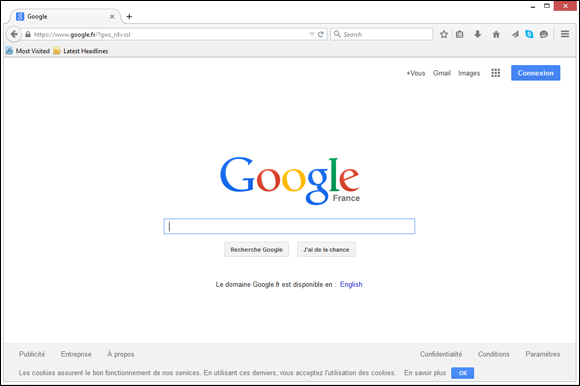
Figure 1-1: Google has sites for many international markets besides the flagship .com address.
Google is available pretty much everywhere. Here’s a small sampling of the languages in which Google is available: Afrikaans, Amharic, Basque, Bihari, Chinese, Dutch, Finnish, Hindi, Kazakh, Malay, Norwegian, Quechua, Slovak, Tagalog, Twi, Urdu, Yiddish, and Zulu. This list is only a sample, but our point is that Google is available pretty much across the globe.
As for the other U.S. players, statistics from NetMarketShare as of May 2015 show that Yahoo makes up approximately 4 percent of the global search market worldwide, whereas Bing, has roughly twice that. Ask (www.ask.com in the U.S.) is a relatively minor player (with less than 1 percent). One extremely important thing to note here is that YouTube actually gets more searches per month than Yahoo.
Even search engines local to the target country are mostly backfilled (supplemented when the local engine's index doesn’t have sufficient inventory) by Google’s search index and paid ads.
Not every country uses Yahoo, Bing, or Google. Hold on tight: We're going to take a whirlwind tour around the global to look at some of the most important search engine brands outside the United States.
Baidu (www.baidu.com, shown in Figure 1-2) is the leading Chinese search engine for websites, audio files, and images. Baidu has an index of more than 740 million web pages, 80 million images, and 10 million multimedia files, and it attracts 5.5 million visitors annually.

Figure 1-2: Baidu leads search engines in China.
Yandex (www.yandex.com, shown in Figure 1-3), launched in 1997, is a Russian search engine and the largest Russian web portal. Its name comes from the phrase Yet Another Indexer.
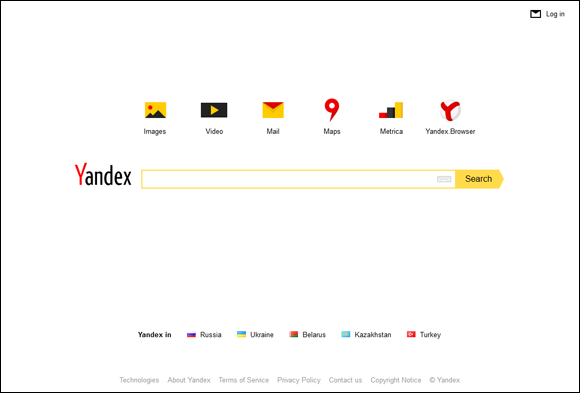
Figure 1-3: Yandex rules in Russian search engines.
Seznam (www.seznam.cz, shown in Figure 1-4) is a Czech search engine that has a customizable home page and other features such as email, maps, and a company database.
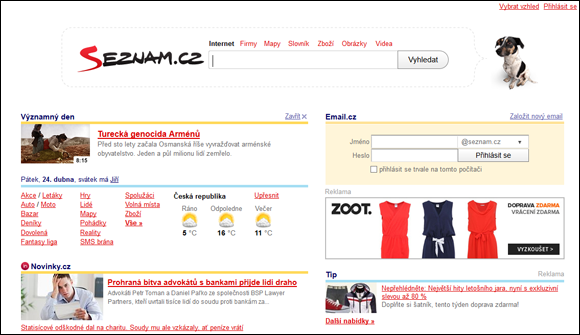
Figure 1-4: Seznam is a Czech search engine.
Naver (www.naver.com, shown in Figure 1-5) is the most popular search portal in South Korea. Naver was launched in June 1999, the first portal in Korea that used its own proprietary search engine. Naver received 2 billion queries in August 2007, accounting for more than 70 percent of all search queries in Korea and making it the fifth most-used search engine in the world, following Google, Baidu, Bing, and Yahoo.
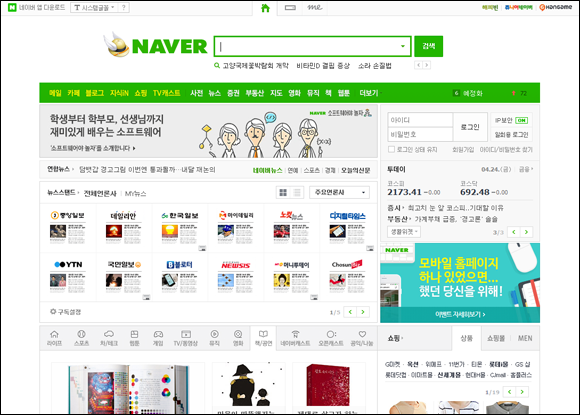
Figure 1-5: Naver is the most popular search portal in South Korea.
Najdi.si (www.najdi.si, shown in Figure 1-6) is a Slovenian search engine and web portal created by Interseek. It's the most-visited website in Slovenia.
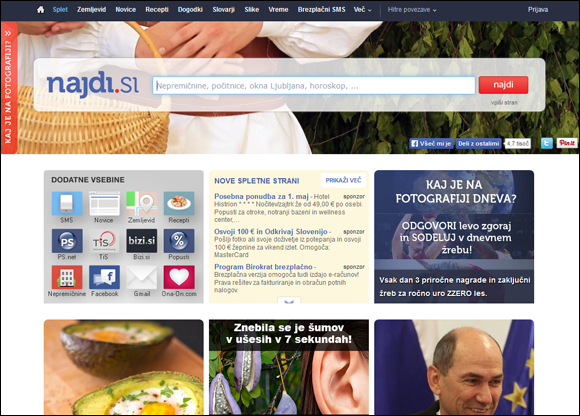
Figure 1-6: Nadji.si is a Slovenian search engine.
These are just a sampling of the search engines across the world. So where do you want to advertise? Simple answer: maybe on all of them. You always want to be where your customers are looking for you. However, if that’s too broad and a little daunting, narrow your target market by demographic or search engine. Start out small and then expand as time goes on (depending on your success in the international markets, of course).
- Perform on-page SEO content analysis. The Single Page Analyzer (available in its full-featured form in the free SEOToolSet Lite) supports about 20 languages. Use it to review how keywords are optimized on your page, with a natural language analysis that scores your content, makes suggested improvements, and visually maps your page themes.
- Monitor keywords in a number of engines, including country-specific engines. We think the Ranking Monitor (available only in SEOToolSet Pro) is a great tool, and not just because we built it. You can monitor your pages’ rankings for your target keywords on search engines in close to 20 countries.
- Share data with an international team. With an unlimited number of users able to access and manage your projects, you can empower your multinational team with the data available through the SEOToolSet. Every report and interface can be displayed in 20 languages with the switch of a drop-down menu.
For more about the capabilities of the SEOToolSet, check out Book III, Chapter 2.

 Before you get started, remember that when doing business in other countries, you have to be aware of laws other than those of the United States. Unfortunately, to make things difficult on all of us, there is no such thing as a standard international copyright law. National laws, to no one's surprise, apply only to businesses operating within that country. Two countries can barely agree on pizza toppings, metaphorically speaking, let alone a standard international law. Although international law goes beyond the scope of this book, we caution you to look into the laws governing copyright and business before entering an international market.
Before you get started, remember that when doing business in other countries, you have to be aware of laws other than those of the United States. Unfortunately, to make things difficult on all of us, there is no such thing as a standard international copyright law. National laws, to no one's surprise, apply only to businesses operating within that country. Two countries can barely agree on pizza toppings, metaphorically speaking, let alone a standard international law. Although international law goes beyond the scope of this book, we caution you to look into the laws governing copyright and business before entering an international market. The language barrier is a fairly tricky one to navigate as well. Some countries have multiple languages spoken by the populace. For example, in the Netherlands, two main languages are spoken by the population, Dutch and Frisian, but most people speak English or German as well. Marketing in the correct language can be trickier than you'd think. Having local input is the best way to make sure you're getting it right.
The language barrier is a fairly tricky one to navigate as well. Some countries have multiple languages spoken by the populace. For example, in the Netherlands, two main languages are spoken by the population, Dutch and Frisian, but most people speak English or German as well. Marketing in the correct language can be trickier than you'd think. Having local input is the best way to make sure you're getting it right. When you are doing keyword research, make sure to do it in the target language. Don’t just copy/paste into an online translator to find keywords to try. You run the risk of missing out on nuances, subtleties, and all the cultural references you could be using in keywords, and you may run afoul of many tricky conjugation rules.
When you are doing keyword research, make sure to do it in the target language. Don’t just copy/paste into an online translator to find keywords to try. You run the risk of missing out on nuances, subtleties, and all the cultural references you could be using in keywords, and you may run afoul of many tricky conjugation rules.